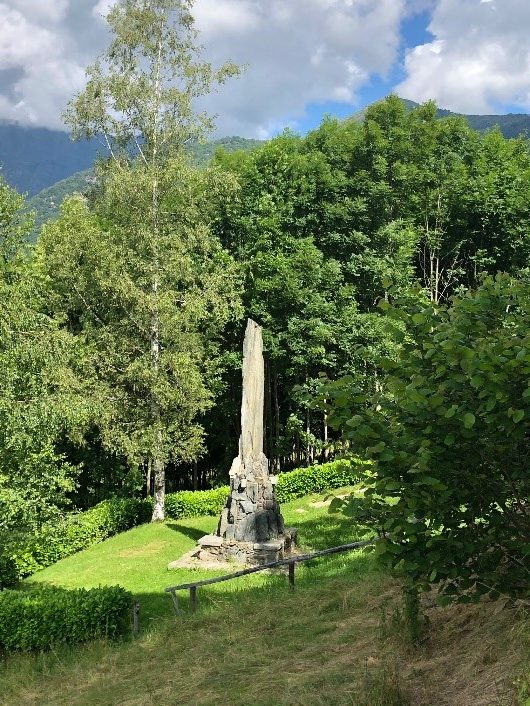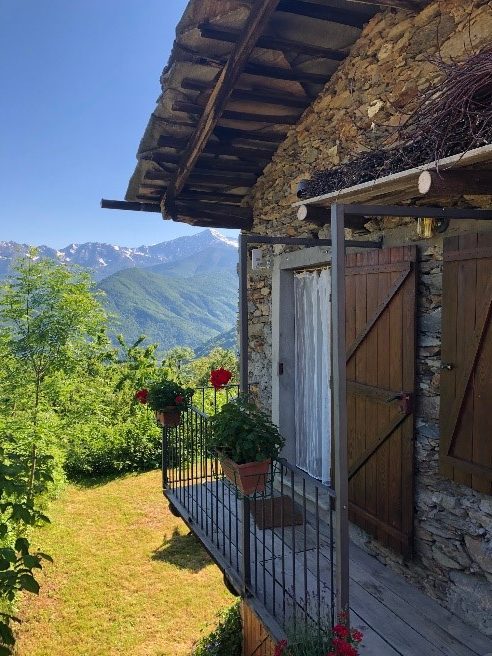
Read: Genesis 31:43-55
Therefore he called…the pillar Mizpah (Watchpost), for he said, “The LORD watch between you and me, when we are absent one from the other (Genesis 31:48b-49, NRSV).
Monuments have been much in the news lately. Having lived in Richmond, Virginia in the early 90’s, I watched with delighted disbelief these last weeks as Jefferson Davis took a tumble. Robert E. Lee is still clinging to his plinth, but I suspect it’s only a matter of time before he “steps down” as well.
Jacob and Laban didn’t trust each other any further than they could have thrown the boulder they set up as a monument to their strained relationship. If you read the whole of Genesis 31, you’ll see that Jacob spends a lot of time justifying his actions. It makes one wonder if the “protests too much.” Laban simply shrugs and says, “What can I do?” He knows Jacob pretty well by now, and there is a sense in which the two deserve each other. The monument they erect is intended as a “witness” between then, It’s partly an acknowledgement that they need an impartial judge to sort out who is in the right. But mostly, it’s a symbol of the new non-aggression pact between them.
And you thought your family dynamics were complicated!
On the side of a mountain near where I’m staying in Italy’s Angrogna Valley, there is a very different kind of monument. It was erected in memory of the six-day Synod of Chanforan, held on that very mountainside in 1532. It was a meeting of the minds between the local Waldensian leadership and representatives of the “new” reformation leaders from Calvin’s Geneva. Bear in mind that the Waldensians had been insisting on reading the Bible for themselves since the 12th century. But at this synod, they decided that they were basically on the same page as the newcomers from Geneva. The first thing the new allies did was to commission the first full translation of the Bible from the original languages into French. It got a lot of them killed, unfortunately, but they certainly had the courage of their convictions. This whole chapter of the Reformation could well be called, “Dying to Read the Bible.”
As a veteran of many church synods, there aren’t many I would want to memorialize with a monument. To be honest, they all tend to run together in my mind. The one exception, however, was the Reformed Church in America’s 2010 General Synod, which officially embraced the Belhar Confession. The Belhar was born in South Africa amidst the struggle against apartheid. I remember people arguing against its adoption on the grounds that this “wasn’t our fight.” Recent events have, I hope, put that argument to rest. I, for one, am grateful for this living monument to unity, reconciliation, and justice. Its words, forged in the pain of the past, are a touchstone for present and future faithfulness.
Time and Providence will decide which monuments deserve to stand.
Ponder this quote from the Belhar Confession:
We believe that any teaching which attempts to legitimate such forced (racial) separation by appeal to the gospel, and is not prepared to venture on the road of obedience and reconciliation but rather, out of prejudice, fear, selfishness and unbelief, denies in advance the reconciling power of the gospel, much be considered ideology and false doctrine.
Pray: Help us to feel the reconciling force of the gospel, gracious God. Help us—individually and collectively—to walk the road of obedience.
Listen to “Time to Say Goodbye” as sung by Andrea Bocelli and Sarah Brightman. I often find myself singing this popular Italian song while I’m cleaning out the refrigerator, but perhaps its refrain may be appropriate for some of our monuments as well.

“The View from Here” Series
As many of you know, I am spending my sabbatical in Italy. After living for several months in the heart of Rome, I recently made a move to the mountains. (The Italian side of the Cottian Alps, to be precise—southwest of Turin and very close to the French border.) The transition was tricky, what with the pandemic and Italy’s tight restrictions on travel. But I am grateful for the spectacular change of scenery after being locked down in a two-room apartment. While the view has changed, I will continue to offer what I hope is a unique perspective on Italy—and the world—right now.
And yes—the picture above really is the place where I am living. Now you know why I’m calling this series, “The View from Here.” I hope that you will be able to enjoy that view vicariously, as well as some of the deep peace of this place.
Shalom,

